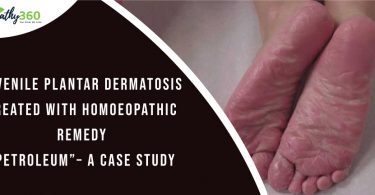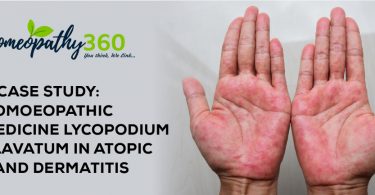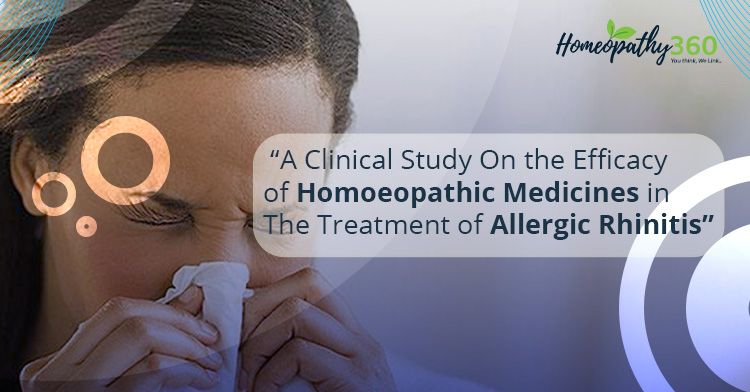
Keywords: Allergic rhinitis (AR), homoeopathic medicines
Abbreviations: Allergic rhinitis (AR)
Introduction:
Allergic rhinitis (AR) is one of the most prevalent medical conditions, a major chronic respiratory disease by its virtue. It has significant effects on quality of life and can have considerable socio-economic effects on children and youngsters with respect to school performance and work.
With allergic rhinitis, the quality of life can be considerably reduced, leading to impaired performance of daily activities, cognitive function and classroom productivity, and reduced psychosocial well-being.
Symptoms of AR are often ignored or mistakenly attributed to a respiratory infection. Inflammation of the nose, or rhinitis, is the major symptom of AR. Inflammation causes itching, sneezing, runny nose, redness, and tenderness. Sinus swelling can constrict the eustachian tube that connects the inner ear to the throat, causing a congested feeling and “ear popping.” The drip of mucus from the sinuses down the back of the throat, combined with increased sensitivity, can also lead to throat irritation and redness. AR usually also causes redness, itching, and watery eyes. Fatigue and headache are also common. Symptoms that occur shortly after one come into contact with the substance you are allergic to may include: [1,2]
- Itchy nose, mouth, eyes, throat, skin, or any area
- Problems with smell
- Runny nose
- Sneezing
- Tearing eyes
Symptoms that may develop later include:
- Stuffy nose (nasal congestion)
- Coughing
- Clogged ears and decreased sense of smell
- Sore throat
- Dark circles under the eyes
- Puffiness under the eyes
- Fatigue and irritability
- Headache
- Memory problems and slowed thinking[1,2]
Objectives of the study:
1. To study in detail about allergic rhinitis.
2. To see the effectiveness of homoeopathic medicines in the treatment of allergic rhinitis.
Materials and methods:
• This study has been conducted on the patients who were suffering from allergic rhinitis to assess the effectiveness of homoeopathic medicines in the treatment of allergic rhinitis.
Research design:
Non-controlled experimental study design.
Sample design:
Total 30 cases were selected by purposive sampling method.
All cases were selected according to inclusion criteria and excluded according to exclusion criteria.
Inclusion criteria:
• People between all age group of both genders.
• All clinically diagnosed cases of allergic rhinitis irrespective of their sex, socioeconomic status, ethnic group and occupation were considered.
Exclusion criteria:
- Cases without regular follow up.
- Cases with complications.
- Patients who were suffering from systemic disease such as high blood pressure, diabetes mellitus, etc.
Source of data:
• The data was collected from patients reported to the outpatient department, of Kulsum clinic, Akola, Maharashtra.
• Data was collected from patients or their parents/attenders, by interviewing the patient’s history in detail and after thorough physical examination.
Analysis of data:
All the collected symptoms of each patient were analysed and totality of symptoms was obtained in each case by taking into consideration the homoeopathic principles.
The potency selection was done based on the demand of the case, taking into consideration the criteria of susceptibility, vitality, changes in the structural and functional level as per need of the case. These cases were followed up for a period of 6 months.
During the follow up, each case was evaluated keenly including the intensity of symptoms before during and after treatment. No controls were considered during the study. All cases were treated after taking case with the help of SCR, in which the complete symptomatology of patients (clinical presentation and individual symptoms) was recorded. Selection of remedy in each case was based on the totality of symptoms.
Follow ups:
Cases were reviewed for every 7 days, 15 days basis to assess the subjective and objective changes. Each case was followed for a period of 3 months from the commencement of treatment.
Assessment of effectiveness:
Effectiveness of the medicines was assessed on the basis of clinical improvement and the disappearance or relief of symptoms, improvement in general health.
After competition of treatment, the post – treatment disease intensity was compared taking into consideration the general well-being of the patient and symptoms of allergic rhinitis.
Plan and data analysis:
Data was analysed using descriptive statistics and the results were presented by using tables, percentages, diagrams and graphs as per need. The significance of the treatment before and after using homoeopathic medicine was tested by using paired t-test.
Results:
Graph showing sex distribution of total 30 cases:
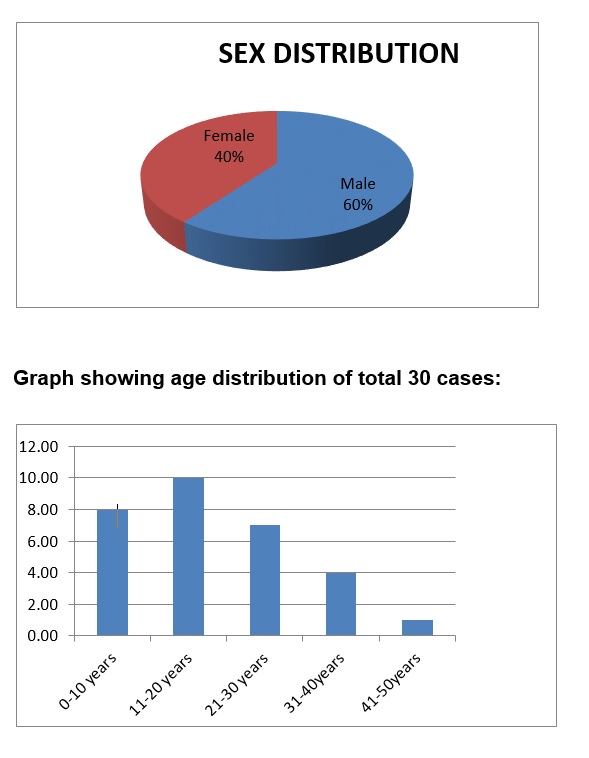
Graph showing age distribution of total 30 cases:
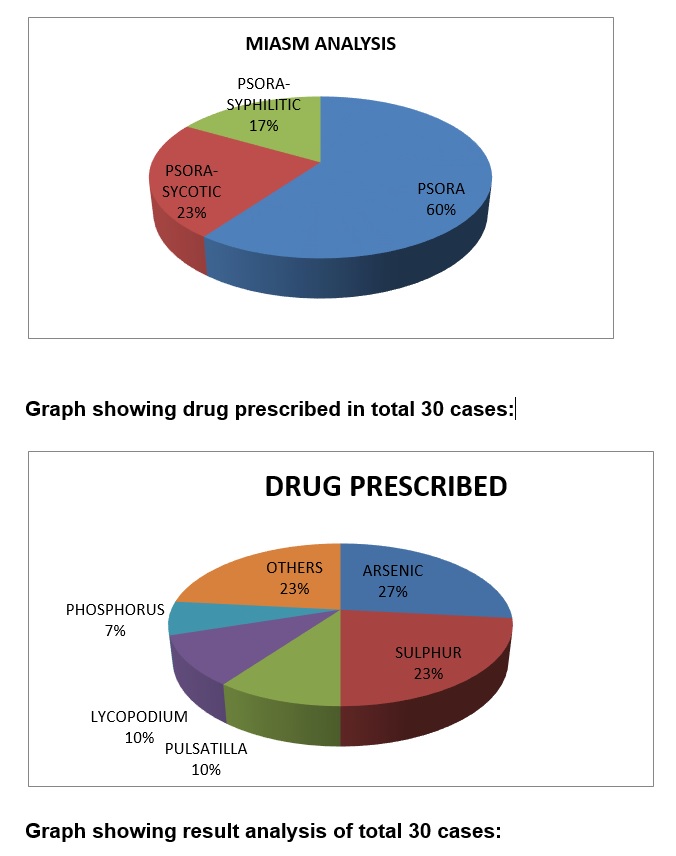
Discussion and conclusion
Arsenicum album was prescribed in cases where the patients were debilitated and exhausted after a long suffering. Restlessness, nightly aggravation, great exhaustion after slightest exertion, burning which is relieved by heat, constant state of fear, worry and anxiety, acrid, thin, and scanty discharge from mucus membrane which is very offensive (putrid). Thin, acrid, and excoriating discharge. Nose feels as if stopped up. Sneezing without relief. Hay fever with coryza < open air and > indoors. Right-sided coryza with hoarseness and sleeplessness. [3,6,7]
Sulphur was prescribed in cases wherethere was relapsing tendency of symptoms and the indicated when the well-selected remedy fails to produce effective result. Irregular distribution of circulation causing local burning, throbbing, and congestion. Chronic dry cough, scabs and nose feels stiffed at indoors. Frequent sneezing in morning and evening. Oppression and burning sensation in chest. Respiration difficult, wants windows open. Loose cough worse talking and morning. [3,6,7]
Pulsatilla nigricans was prescribed in those cases where patient was subjected to repeated attacks of coryza, with sneezing, and stuffing up of nose. In the evening, watery discharge, with sneezing. It is suited to chronic catarrh. The patient feels better in open air and worse in warm room. There are times when his nose stuffs up more in warm room, where he sneezes more in a warm room. He gets up in the morning with a stuffed up nose. [3,6,7]
Lycopodium clavatum was prescribed in case where there was predominance of symptom on the right side of body, and they travel left. The cold settles in the nose. The patient is sensitive to cold and there is lack of heat, worse in general from cold and cold air and from cold food and drinks, amelioration by warm drinks. [3,6,7]
The other drugs used were Natrum muriaticum, Calcarea carbonicum, Causticum, Colchicum autumnale, Silicea terra, Rhus toxicodendron, Nux vomica.
CONCLUSION:
Out of the total 30 cases where 18 were males and 12 were females. Maximum patients covered psoric miasm, followed by psoro-sycotic and psoro-syphilitic miasm.[4,5] Arsenicum album, Sulphur, Pulsatilla nigricans were prescribed frequently depending upon totality of symptoms. From the 30 cases, 12 patients recovered, 15 shown improvement and 3 discontinued the treatment.
Limitations:
The main limitation of the current study was that the present study was carried out with a sample of participants visiting our out-patient departments so it may not be considered as the exact representative of entire cases of allergic rhinitis.
References
1. Shah S. API Text Book of Medicine. Ed. – 2006.
2. Davidson S. Principle and Practice of Medicine. Ed.- 20th. 2006.
3. Lilienthal S. Homoeopathic Therapeutics.
4. Allen JH. The Chronic Miasm, Psora, Pseudo – Psora, Sycosis.
5. Banerjea SK. Miasmatic Diagnosis – Practical Tips with clinical comparison.
6. Kent JT. Lectures on Materia Medica.
7. Nash EB. Leaders in Homoeopathic Therapeutics.
About the author:
Dr Kulsum Sameen
BHMS,M.D (Repertory),PhD(Scholar),
working as Associate Professor in Department of Physiology, PHMC KHAMGAON, MAHARASHTRA



